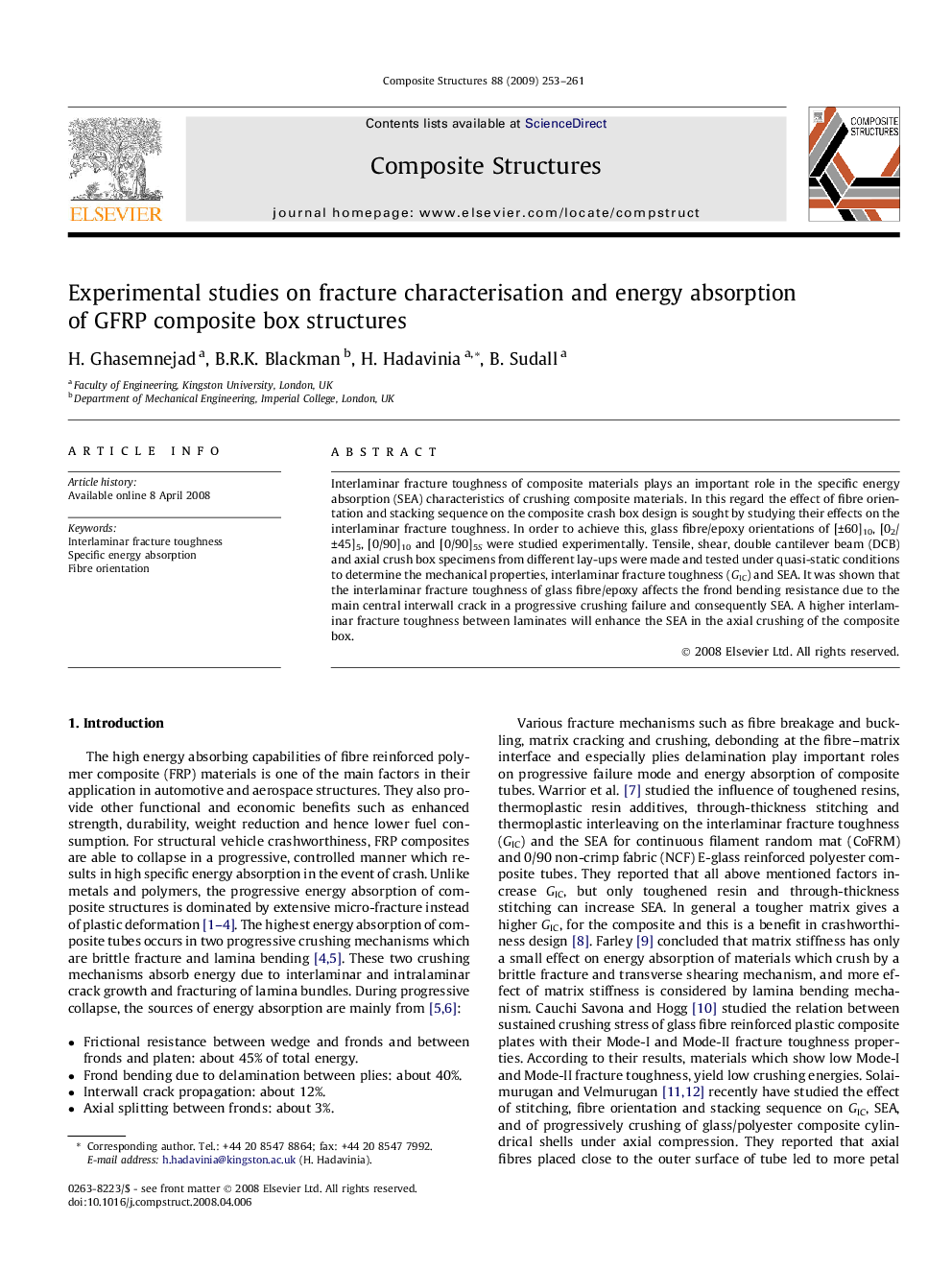| Article ID | Journal | Published Year | Pages | File Type |
|---|---|---|---|---|
| 253640 | Composite Structures | 2009 | 9 Pages |
Interlaminar fracture toughness of composite materials plays an important role in the specific energy absorption (SEA) characteristics of crushing composite materials. In this regard the effect of fibre orientation and stacking sequence on the composite crash box design is sought by studying their effects on the interlaminar fracture toughness. In order to achieve this, glass fibre/epoxy orientations of [±60]10, [02/±45]5, [0/90]10 and [0/90]5S were studied experimentally. Tensile, shear, double cantilever beam (DCB) and axial crush box specimens from different lay-ups were made and tested under quasi-static conditions to determine the mechanical properties, interlaminar fracture toughness (GIC) and SEA. It was shown that the interlaminar fracture toughness of glass fibre/epoxy affects the frond bending resistance due to the main central interwall crack in a progressive crushing failure and consequently SEA. A higher interlaminar fracture toughness between laminates will enhance the SEA in the axial crushing of the composite box.
